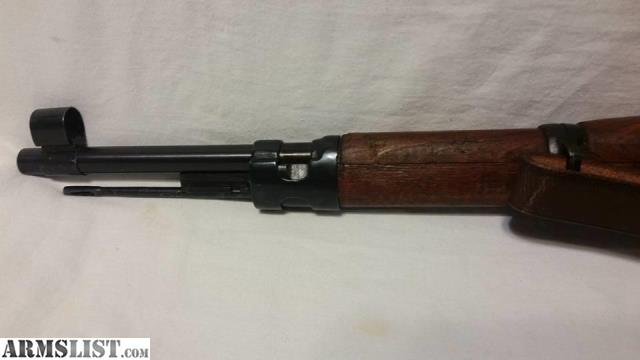M48 Yugo Mauser Serial Numbers

Full length view of M48 Mauser rifle and typical accoutrements. Enlarge photo 2 2. Full length view of rifle and typical accoutrements. Note the issue sling and M48 bayonet. Enlarge photo 3 3. Note the serial number stamped into the elm stock. Enlarge photo 4 4. Note the opened bolt and the bolt stop. Enlarge photo 5 5. Maintained Combat-Ready (and it still is) for over 50 years, now it can be yours. Original Factory matching serial numbers on all rifle parts. Preserved by an accident of history, supply is limited. Original accessories as issued at the time are sold separately, while supplies last. This Mauser is ideal for collecting, target shooting. Browse all new and used Mauser Rifles - Military for sale and buy with confidence from Guns International. Made on German Tooling set up in formerly occupied Serbia. Military- New condition with clean, Bright Bores, and solid stocks, with an American Owner's Manual covering history, operation, and safety. Maintained Combat- Ready (and it still is) for over 5. Original Factory matching serial numbers on all rifle.

— 'Let's Go', a marching song written after The military of the USSR. It underwent some changes during the history of the Soviet Union. If you're looking for an article about their space program, you're in the wrong place (though their military rockets did lead to their early space program successes). Largely a conscript force, unlike the USA's post- volunteer force. Pretty much everything about Soviet armed forces was designed around reliability, from durable-but-simple vehicles, to every distinct form of weapon having a distinctly named ammo (even if two different weapons had, say, rounds 40mm in diameter, the Soviets would call one of them a 38mm round, just so idiots in the supply chain would be less likely to make mistakes). The durable-but-simple philosophy also made it possible for the Soviets to have a remarkably successful foreign arms trade, even with lower productivity in their electronics sector; versions of vehicles made for export simply left out the bits that were tricky to manufacture and used cheaper (i.e. Weaker) materials for everything, e.g.
Thus, say, the BMP-1 that Egypt operated was a much different beast than the BMP-1 that the Soviets themselves had. From its establishment in 1917 to February 1946, the ground component of the Soviet armed forces was known as the Red Workers and Peasants' Army, usually shortened to the Red Army. From February 1946 until the fall of the Soviet Union in 1991 it was known as the Soviet Army. Taking western Europe was a cornerstone of the Soviet military's rhetoric throughout the Cold War, both in its struggle for funding and influence within the Soviet state and internationally. However, the Soviet military's ability to fulfill this mission fluctuated over time. For all that, there were a few constant factors in its favor.
Install Pbk After Effects there. From the outset, its likely opponents would've failed to use their inferior numbers as a unified force note France was always a bit of a wild-card and it's anybody's guess whether they would have stuck their neck out over an 'Anglo-American' issue, especially while Stalin was alive — he and were pretty chummy. Meanwhile, West Germany's politicians insisted on using their forces to defend their peace-time borders.
Which were often totally indefensible and would more than likely see their forces cut off from the rest of NATO. They also lacked an adequate defensive strategy to counteract the Warsaw Pact's offensive strategy, which would have been to deliver a massive knock-out blow to split NATO's forces in half on the North German Plain, crush the isolated northern pocket, and move on to break up and finish off what was left. The Soviets military's ability to actually live up to its rhetoric depended very much on the time-period. From 1945-53, Stalin gave the military the resources it needed to carry out this mission - with the expectation that it would fulfill it even with its forces and the German, Polish, Soviet, etc cities that supplied it taking the USA's several-hundred nukes. From 1956, whatever ability the Soviet military might have retained after its one-fifth downsizing by Khruschev was totally negated by his insistence that they adopt and use tactical nuclear weapons (which, in all probability, would've led to the war going nuclear within a matter of days if not hours). Under Brezhnev in the late 1960s the Soviet military was gradually 'restored' to the point that they again had confidence in fulfilling the operation (without any use of nukes, of course). But in the late 1970s Soviet theorists began to fear what they saw as a coming 'revolution in military technology' which would make the campaign difficult if not impossible by the late 1980s, something subsequent studies (using NATO and WP records) have tended to confirm.